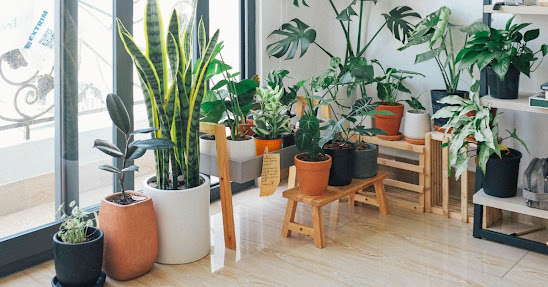What Are the Benefits of Bringing Planters Inside?
Transitioning planters from an outdoor environment to indoors can be beneficial for certain plants, especially during colder months or adverse weather conditions. Here are some steps to help you bring your planters inside:
1. Timing:
Choose the appropriate time to move your planters indoors. Ideally, this should
be done before the first frost or when temperatures consistently drop below the
plant's preferred range.
2. Inspection:
Before bringing the planters indoors, thoroughly inspect the plants for any
signs of pests, diseases, or problems. It's essential to address these issues
before moving the plant indoors to prevent the spread of pests or diseases to
other houseplants.
3. Cleaning:
Clean the planter, removing any dead foliage, debris, or old soil. You can also
gently rinse the planter to remove any dirt or pests that may be on the
surface.
4. Acclimatization:
Ease the transition for your plants by gradually acclimating them to the indoor
environment. Start by moving the pots to an intermediate location, such as a
garage or covered patio, for a few days. Then, gradually introduce them to the
indoor environment by placing them in a room with similar light and temperature
conditions. This gradual transition will help minimize stress and shock to the
plants.
5. Placement:
Choose the appropriate location in your home for the modern outdoor planters. Consider their light requirements and find
a spot that provides sufficient natural light or supplement with artificial
grow lights if necessary. Ensure that the area has good air circulation but
avoid drafty locations.
6. Watering
and Fertilizing: Adjust your watering schedule and fertilization routine to
suit the needs of indoor plants. Indoor environments tend to have drier air, so
plant watering needs may differ from when they were outside. Check the soil’s moisture
level and regulate watering accordingly. Indoor plants generally require less
fertilization than their outdoor counterparts.
7. Pest Prevention: While bringing plants indoors, make sure to inspect them for any pests, such as aphids or spider mites. Isolate any infested plants and treat the problem before introducing them to your other indoor plants. Regularly monitor your indoor plants for pests and take appropriate measures if you notice any issues.
By following these steps, you can successfully transition your outdoor planters indoors and provide a comfortable environment for your plants to thrive during the colder months.
Frequently Asked Questions (FAQs) About Modern Outdoor Planters:
Q: What are modern outdoor planters?
A: Modern outdoor planters are contemporary, stylish containers designed for holding plants outdoors. They come in various materials, shapes, and sizes, offering a sleek and aesthetic addition to outdoor spaces.
Q: What materials are commonly used in modern outdoor planters?
A: Common materials for modern outdoor planters include fiberglass, metal, concrete, ceramic, and composite materials. Each material has its unique characteristics, providing options for different styles and preferences.
Q: How do I choose the right size of modern outdoor planter for my space?
A: Consider the size of the plants you want to grow and the available space. The planter should accommodate the root system and leave enough room for plant growth. Additionally, ensure the planter complements the overall design of your outdoor space.





Comments
Post a Comment